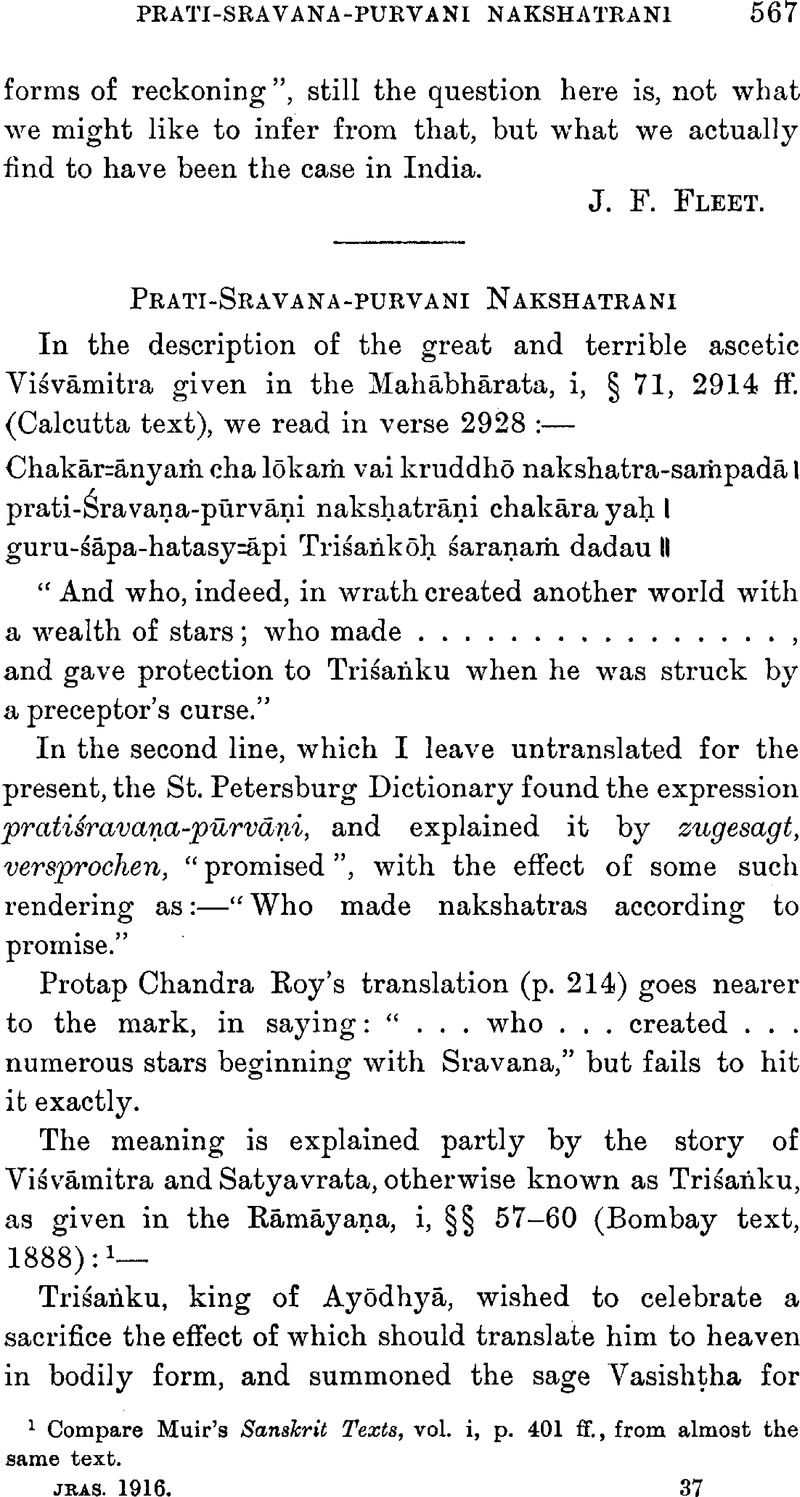No CrossRef data available.
Article contents
Prati-Śravaṇa-pūrvāṇi Nakshatrani
Published online by Cambridge University Press: 15 March 2011
Abstract

- Type
- Miscellaneous Communications
- Information
- Copyright
- Copyright © The Royal Asiatic Society 1916
References
page 567 note 1 Compare Muir, 's Sanskrit Texts, vol. i, p. 401 ff.Google Scholar, from almost the same text.
page 568 note 1 Avākśirāḥ; here and farther on.
page 568 note 2 That is, somewhere to the south of the limit to which the sun goes at the winter solstice.
page 568 note 3 That is, in the attitude in which he was and remained when his fall back towards the earth was arrested by Viśvāmitra: see above, and compare the Bhāgavata-Purāṇa, 9. 7. 6.
page 569 note 1 I take these to be the four bright stars of the Southern Cross, with its “pointers” α and β Centauri, and perhaps with α Trianguli Australis as the seventh star at the end of the tail of the Bear, or of the pole of the Wain according to the Hindū figuring: see Proctor, 's New Star AtlasGoogle Scholar, plate 12. As regards Triśaṅku himself, the commentary under verse 21 seems to imply that his place was that of a southern pole-star, with the new Saptarshis and other stars circling round him.
page 569 note 2 The commentary on Rāmāyaṇa, , § 60, v. 24Google Scholar, supplies another similar term, prati-svarga, “a second heaven,” which does not seem to have found its way into dictionaries.




